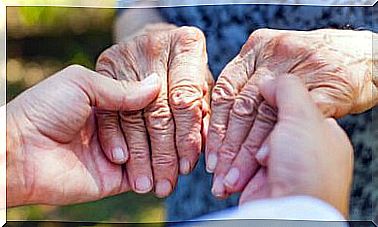The Maudsley Method: Family Treatment Of Adolescent Anorexia Nervosa

The Maudsley Method is an anorexia-focused family therapy for children under 18 years of age created by Christopher Dare and his colleagues at London’s Maudsley Hospital.
Anorexia nervosa (AN) was first recognized more than 125 years ago. This disorder still baffles patients and their families and perplexes physicians. The treatments are generally effective in restoring weight.
However, they can be detrimental to the adolescent’s family, social and educational life. In addition, weight restoration alone is not enough for recovery, so relapses are often common.
The Maudsley method for AN is a successful outpatient model and alternative to the expensive inpatient programs that were discussed at Maudsley Hospital.

The Maudsley method for treating adolescent anorexia
Few controlled clinical trials have been conducted to explore effective outpatient treatments for adolescents with anorexia. While the research has not been extensive, recently published reports on the treatment of adolescent AN have been very encouraging about the efficacy of the Maudsley Method.
In a review of all the research carried out by the NICE institute in England, it was concluded that all health services should use anorexia-focused family therapy as a priority. The Maudsley method therefore appears as an excellent treatment option. The therapy is manualized and is also explained in some books for parents.
The Maudsley method also aims to correct wrong attributions of blame for the patient’s illness. That is, neither the parents nor the adolescent are responsible for the eating disorder. Therefore, a theoretically agnostic approach to the etiology of this disorder is adopted.
Phases of the Maudsley Method
The Maudsley method progresses through three clearly defined phases that generally take place within 15-20 treatment sessions over a period of approximately 12 months.
Phase I: weight restoration
In Phase I, also known as the weight restoration phase, the therapist focuses on the dangers of severe malnutrition associated with AN. Symptoms such as hypothermia, changes in growth hormone, heart dysfunction, or cognitive and emotional changes are treated.
The typical family interaction pattern and eating habits are also evaluated. The therapist will do everything possible to assist parents in their joint attempt to restore their adolescent’s weight. Most of this first phase of treatment is accomplished by training parents toward success in restoring weight.
Realignment with siblings or partners is also very important. It helps the adolescent to form stronger and more age-appropriate relationships rather than being ‘involved’ in a parenting relationship.
Phase II: returning control over eating to the adolescent
This phase of treatment focuses on encouraging parents to help their children take more control over eating. Although symptoms remain central to discussions between therapist and family, weight gain is encouraged with minimal stress.
In addition, other problems or general difficulties of family relationship are beginning to be addressed. The day-to-day concerns that the family has had to put off can now be submitted for your review. Above all, the effect that some problems have on the task of ensuring constant weight gain is analyzed.
Phase III: establish a healthy adolescent identity
Phase III begins when the adolescent can maintain weight above 95% of ideal weight and starvation has decreased.
The focus of treatment begins to shift towards analyzing the impact that AN has had on the individual. It works to establish a healthy adolescent identity. This implies a review of the core problems of adolescence and includes support for greater personal autonomy for the adolescent.
It works on the development of appropriate parental boundaries, as well as the need for parents to reorganize their life together after the possible departure of their children.

The promise of the Maudsley method
In summary, the Maudsley approach holds great promise for most adolescents who have been ill for a relatively short period of time (ie less than 3 years).
This family-based treatment can prevent hospitalization and assist the adolescent in recovery, provided that parents are seen as a resource and allowed to play an active role in treatment.









